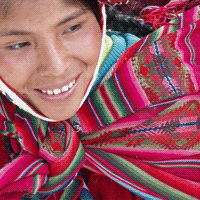
Committee Meetings
SCT: Work continues on Trademark Issues
The Standing Committee on Trademarks, Industrial Designs and Geographical Indications (SCT) met in Geneva from November 13 to 17.
New marks
The SCT continued to examine the different approaches by Member States to the representation and description of new marks, such as three-dimensional, audio, single color, hologram, and olfactory (smell) marks. One purpose of this work is to identify areas of convergence and to explore in greater detail the relationship between established trademark principles and new types of marks, for example, in terms of functionality, specialty and distinctiveness. The SCT also considered questions of public interest, including the need to safeguard the public domain.
Trademark opposition procedures
The SCT addressed the issue of trademark registration opposition procedures, which offer third parties the opportunity to oppose the registration of a trademark within a period of time provided by the applicable law. Delegates agreed to continue work on the grounds of opposition, to examine the experience of SCT Members with regard to pre-registration or post-registration opposition and to look into the relationship between given types of examination systems and their related opposition procedures.
International non-proprietary names for pharmaceutical products (INNs)
The SCT also agreed on a number of proposals for making information on INNs available to trademark administrations of interested countries, including the circulation of cumulative lists of INNs on CDs. This initiative, undertaken in cooperation with the World Health Organization (WHO), will help to prevent conflicts between INNs and trademarks, and to discourage the use as trademarks of commercial names derived from INNs.
The aim of the INN system is to provide health professionals with a universal naming system to identify all pharmaceutical substances. There are currently 8,000 INNs. Each one is unique and is globally recognized as the generic name for an active substance used in pharmaceutical preparations. With the growing number of INNs and trademarks, the possibility of conflicts between them has gradually increased. The main source of conflict is usually an attempt by a manufacturer to propose a new trademark containing "stems" which are word elements established in the INN system to demonstrate the relationship between pharmacologically related substances. By the use of common "stems" medical practitioners can recognize that the substance belongs to a group of substances having similar pharmacological activity.
Non-exclusive list of customary names associated with biodiversity
The Committee took note of a non-exclusive list of customary names used in Brazil associated with biodiversity, which was presented to the Committee by the Delegation of Brazil. Such a list will help to inform would-be trademark applicants as well as trademark registration authorities of the generic nature of these terms in Brazil.
Industrial designs
The SCT agreed to promote a better understanding of various industrial design registration systems and to develop a questionnaire on the formalities of industrial design registration in member countries. The Committee further agreed to explore the borderlines between all types of marks and industrial designs, and to focus on the jurisprudence in Member States in dealing with the overlap between copyright and trademarks, so as to identify existing and potential problems.
Protection of State emblems and abbreviations of non-governmental organizations
The SCT also agreed to continue work on enhancing certain aspects of the procedure for the protection of State emblems and names and abbreviations of international organizations under Article 6ter of the Paris Convention, including the revision of a searchable online database.
Delegations representing 89 WIPO Member States and 17 observer organizations participated in the meeting. The next meeting is scheduled for May 7 to 11, 2007.
_____________________
IGC: Core Issues Addressed for the Protection of Traditional Knowledge and Traditional Cultural Expressions
The WIPO Intergovernmental Committee on Intellectual Property and Genetic Resources, Traditional Knowledge and Folklore (IGC), which met in Geneva from November 30 to December 8, adopted two lists of issues that it agreed would be the focus of the Committee’s future discussions. These sets of issues (available at www.wipo.int/tk) provide a systematic approach to the fundamental policy choices that Member States will have to make in developing or enhancing protection of tradition knowledge (TK) and traditional cultural expressions (TCEs).

world wide are the custodians of
traditional knowledge and cultural
expressions.
(Photo Mercedes Martínez Dozal)
The IGC requested input from delegates and observers before the end of March 2007on these core issues, which cover such questions as the definitions of TK and TCEs, the form and scope of protection and the nature of the beneficiaries. These comments will be posted on the WIPO website upon receipt and made available to Member States by the end of April 2007. Member States stressed that the work on these core issues would complement the ongoing work in the Committee on the development of draft provisions for protection of TK and TCEs (see www.wipo.int/tk/en/consultations/draft_provisions).
The IGC opened with a panel of indigenous and local community representatives from Bangladesh, Canada, Ecuador, Nigeria, Papua New Guinea, Peru and the Ukraine, chaired by Mr. Rodrigo de la Cruz, a Kichwa person from Ecuador. Mr. De la Cruz emphasized the role of indigenous customary law as the basis for appropriate protection in the panel summary he presented to the Committee. A study process on this issue, to which Mr. de la Cruz is contributing, has been launched at www.wipo.int/tk/en/consultations. This was the first IGC meeting that included participation funded through the voluntary fund, which seeks to enhance participation of indigenous and local communities in the work of the IGC.
Genetic resources
With regard to the question of genetic resources, the IGC requested the Secretariat to prepare a working document listing options for continuing discussions. The working document will include disclosure requirements and alternative proposals for dealing with the relationship between IP and genetic resources; the interface between the patent system and genetic resources; and the IP aspects of access and benefit-sharing contracts. It will be submitted for consideration at the next IGC meeting. The Committee also requested the Secretariat to provide a factual update of international developments relevant to IP and genetic resources. The Committee has in the past developed valuable resources in this field, including a WIPO Technical Study on Disclosure Requirements commissioned by the Conference of Parties of the Convention on Biological Diversity (www.wipo.int/tk/en/publications/technical_study.pdf).
The next session of the IGC will take place from July 3 to 12, 2007.
_____________________
SCCR: Negotiators Narrow Focus in Broadcasting Treaty Talks

WIPO Deputy Director General Michael Keplinger described the outcome as promising. (Photo WIPO/ Mercedes Martínez Dozall)
At the first of two special sessions of the Standing Committee on Copyright and Related Rights (SCCR), which met from January 17 to 19, WIPO Member States pushed ahead with negotiations on a treaty to update the protection of broadcasting organizations, focusing on a signal-based approach.
The 2006 General Assembly laid out a roadmap for the last leg of these negotiations, stating that two special sessions of the SCCR should be held in 2007 to clarify the outstanding issues. The General Assembly decision stipulated that "the sessions of the SCCR should aim to agree and finalize, on a signal-based approach, the objectives, specific scope and object of protection with a view to submitting to the diplomatic conference a revised basic proposal, which will amend the agreed relevant parts of the Revised Draft Basic Proposal (document SCCR 15/2)." The second special session of the SCCR will be held in June. The General Assembly decided that, if agreement on new text was achieved during the special sessions, a diplomatic conference would be held from November 19 to December 7, 2007 in order to conclude a treaty on the protection of broadcasting organizations, including cablecasting organizations.
The main objective of the proposed treaty is to serve "as a stable legal framework for the activities of broadcasting organizations against piracy," explained the Chair of the SCCR, Mr. Jukka Liedes, "but it also provides protection against competitors and unfair exploitation, and against free-riding."
Informal Proposals
At the January special session, Member States addressed the general approaches and the work plan. The Chair presented for discussion a number of informal proposals, which served to focus and narrow the proposed protection toward a signal-based approach. Delegates discussed new combined articles or texts which reduced the range of exclusive rights to be granted to broadcasting organizations. The Committee agreed that a revised version of the Chair’s informal proposals would be prepared by May 1, 2007, with the understanding that Member States may submit suggestions to the Chair.
Mr. Michael Keplinger, the new WIPO Deputy Director General who oversees WIPO’s work in the copyright field, described the outcome as promising . "Member States have established a clear process to address this issue in accordance with the mandate received from the General Assembly, and have demonstrated political will to conclude the negotiations," he said.
The discussions are confined to the protection of traditional broadcasting organizations and cablecasting. This followed a decision by the 14th session of the SCCR in May 2006, to examine questions of webcasting and simulcasting on a separate track at a later date. Updating the IP rights of broadcasters, currently provided by the 1961 Rome Convention on the Protection of Performers, Producers of Phonograms and Broadcasting Organizations, began at WIPO in 1997. A growing signal piracy problem in many parts of the world, including piracy of digitized pre-broadcast signals, has made this need more acute.
_____________________
The WIPO Magazine is intended to help broaden public understanding of intellectual property and of WIPO’s work, and is not an official document of WIPO. The designations employed and the presentation of material throughout this publication do not imply the expression of any opinion whatsoever on the part of WIPO concerning the legal status of any country, territory or area or of its authorities, or concerning the delimitation of its frontiers or boundaries. This publication is not intended to reflect the views of the Member States or the WIPO Secretariat. The mention of specific companies or products of manufacturers does not imply that they are endorsed or recommended by WIPO in preference to others of a similar nature that are not mentioned.